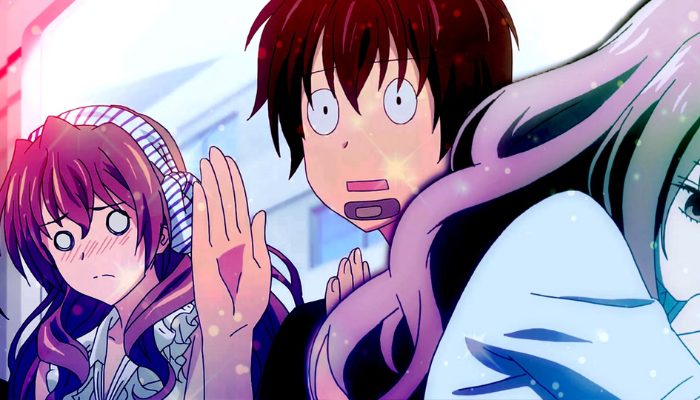Romance manga offers a wide array of narratives that culminate in different types of endings, ranging from blissful happy endings to heart-wrenching tragic conclusions. These endings are crucial in shaping the overall impact of the story, and they influence how readers perceive the characters’ journeys and their emotional responses. This article explores the contrasting romantic endings in the manga, highlighting lesser-known series and their unique approaches. For a broader selection of romance manga and their diverse conclusions, visit zinmanga.
Happy Endings in Romance Manga

1. The Appeal of a Happy Ending
Happy endings in romance manga typically offer a sense of resolution and satisfaction. These conclusions often feature protagonists who overcome obstacles and achieve their romantic goals, providing readers with a comforting and optimistic finale. Happy endings are popular because they resonate with readers’ desires for positive outcomes and emotional closure.
- “Fruits Basket” by Natsuki Takaya is a well-known manga that wraps up with a happy ending. The story follows Tohru Honda as she helps the cursed Sohma family members find happiness and freedom from their burdens. By the end, the characters achieve personal growth and find their respective happy endings, fulfilling the manga’s themes of healing and love.
2. Lesser-Known Manga with Uplifting Conclusions
For readers interested in exploring happy endings beyond the mainstream, several lesser-known romance manga offers satisfying conclusions:
- “Ao Haru Ride” by Io Sakisaka follows the story of Kou Mabuchi and Yoshioka Futaba, whose high school romance faces various challenges. The manga concludes with a hopeful ending as the characters reconcile their past and present, leading to a fulfilling resolution of their romantic journey.
- “Say I Love You” (Suki-tte Ii na yo) by Kanae Hazuki centers around Mei Tachibana, a high school student who learns to open her heart to love. The series ends on a positive note as Mei’s relationship with Yamato Kurosawa blossoms into a deep and meaningful romance, highlighting personal growth and emotional healing.
Tragic Endings in Romance Manga

1. The Impact of Tragic Endings
Tragic endings in romance manga often explore themes of loss, unfulfilled desires, or the impermanence of happiness. These conclusions can be emotionally powerful, providing readers with a poignant reflection on the complexities of love and life. While tragic endings may be less comforting, they offer depth and provoke thought, leaving a lasting impact.
- “Nana” by Ai Yazawa is a prime example of a romance manga with a tragic ending. The story follows two women named Nana, each navigating their own tumultuous love lives. The manga’s conclusion is bittersweet, reflecting the characters’ struggles and the inevitable challenges they face, which resonate deeply with readers.
2. Lesser-Known Manga with Heartbreaking Conclusions
For those who appreciate the emotional depth of tragic endings, several lesser-known manga offers moving and memorable conclusions:
- “Kimi ni Todoke” by Karuho Shiina tells the story of Sawako Kuronuma and her journey to find love and acceptance. The manga’s later volumes introduce significant challenges and changes that test the characters’ relationships, culminating in a conclusion that is both touching and melancholic, capturing the complexity of real-life romance.
- “Solanin” by Inio Asano explores the lives of young adults grappling with love, dreams, and the pressures of adulthood. The manga’s ending is a powerful reflection on the characters’ struggles and the bittersweet nature of their experiences, providing a deep and emotional conclusion.
The Balance Between Happy and Tragic Endings
1. The Art of Balancing Romance
Manga creators often balance happy and tragic elements within their stories to create a more nuanced narrative. By blending both types of endings, creators can provide a richer and more complex portrayal of romance, reflecting the multifaceted nature of real-life relationships.
- “Your Lie in April” (Shigatsu wa Kimi no Uso) by Naoshi Arakawa exemplifies this balance. The manga features a love story intertwined with themes of loss and healing. While it includes moments of joy and romance, it also explores the tragic aspects of the characters’ lives, creating a deeply emotional and balanced ending.
2. Reader Expectations and Emotional Impact
Different readers respond to happy and tragic endings in various ways, depending on their personal preferences and experiences. Happy endings may offer a sense of closure and contentment, while tragic endings can provide a profound emotional experience that challenges and stimulates reflection.
- “Orange” by Ichigo Takano offers a blend of hope and sadness. The story involves a group of friends working to alter past regrets and make positive changes in their lives. The ending balances moments of despair with a hopeful resolution, highlighting the complexities of love and personal growth.
Conclusion
Romance manga presents a diverse range of endings, from uplifting happy conclusions to poignant tragic farewells. These endings shape the emotional journey of the story and influence how readers connect with the characters. Whether seeking a comforting happy ending or a thought-provoking tragic conclusion, readers can find a wealth of experiences within the genre. For more insights into the various romantic endings in the manga, explore the collection at
See also: Cultural Adaptations: How Romance Manga Is Translated and Altered for Global Audiences







